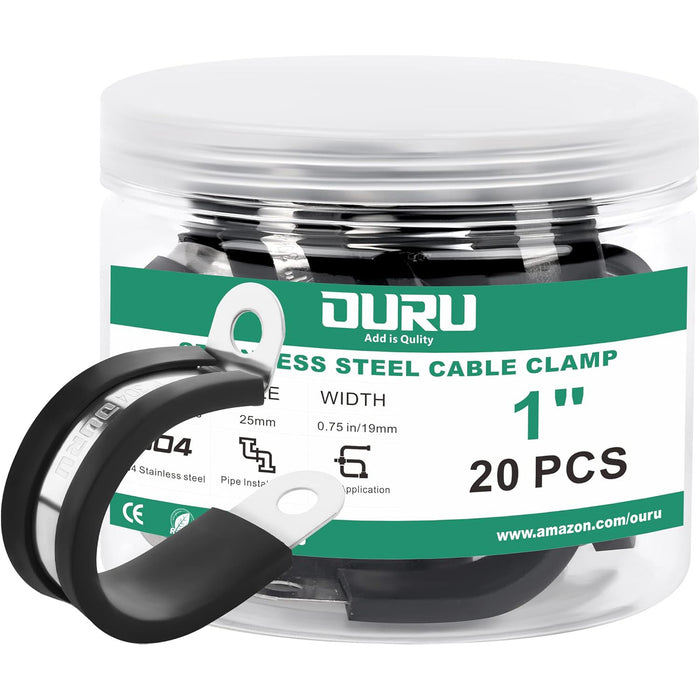
Stainless Steel Cable Clamps—Bottle 10-30 PCS
Shipping Info
All orders are shipped within 4-7 business days.
Free shipping for all orders.
About this item
- 56PCS Cable Clamps Assortment Kit —The stainless steel cable clamps assorted box including 6 different sizes, 12pcs 1/4"(6mm), 12pcs 5/16"(8mm), 8pcs 3/8"(10mm), 8pcs 1/2"(13mm), 8pcs 5/8"(16mm), 8pcs 3/4"(19mm), various sizes are available to meet your needs
- Black Metal Cable Clamps-Each cable clamp is made of 304 high quality stainless steel with rubber coated cushioned.Excellent performance in abrasion,moisture,rust,cold and heat resistance even in harsh environments. It is strong and will not rust or break. It is the best choice for demanding indoor and outdoor
- Durable Rubber Insulated Wire Clamps-Used to fix and support pipes or wires and cables.The nylon rubber cushion on the cable clamp prevents damage caused by shock due to vibration, effectively protects the line and tube. Rubber insulation provides a safer installation. It can be firmly fixed in the right position, study and reliable
- Easy installation-The 56pcs garden hose pipe clamps kit(6-19mm) in a storage box for easy to carry and store. With unique R-shaped design,flexible twisting and easy to control during installation, simple disassembly.You only need to use a screwdriver and screws to fix the clamps in the proper place,save time and effort. It can be recycled and reused, can be used for a long time
- Ideal for Application-The marine grade rubber p clamp. Used in automotive, industry, boat, outdoor, home decoration, DIY, RVs and any place where vibration may occur. Such as wires, cables, pipes, line management and repair
Product Details
| Property | Value |
|---|---|
| Brand | OURU |
| Color | Black |
| Style | Bottle |
| Material | Stainless Steel |
| Item model number | 1" 1-1/2" 1-1/4" 1/2" 1-3/4" 1/4" 1/8" 1/8-1" 2" 3/4" 3/8" 3/16" 5/8" 5/16" |
| Package dimensions | 8.35 x 6.77 x 1.89 inches |
























